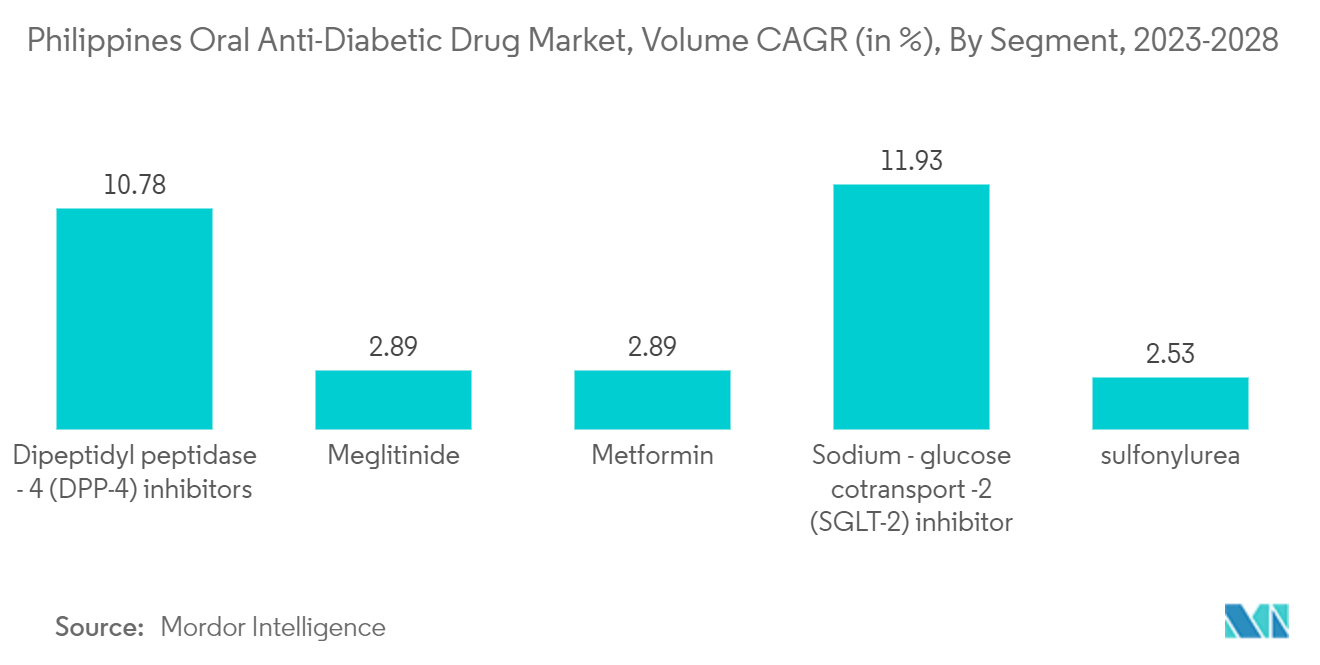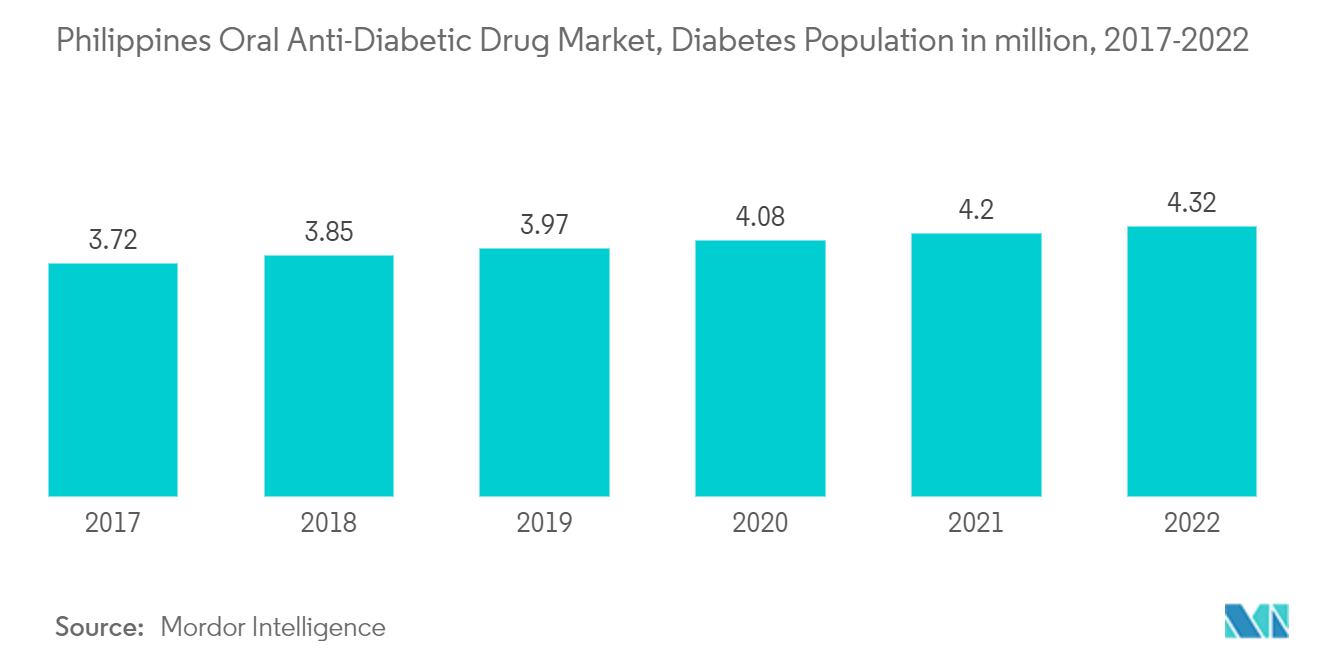Market Trends of Philippines Oral Anti-Diabetic Drug Industry
Sulfonylureas Segment Occupied the Highest Market Share in the Philippines Oral Anti-Diabetic Drugs Market in the current year.
Regarding revenue, the Sulfonylureas segment is anticipated to lead the Philippines' Oral Anti-Diabetic Drugs Market and post a CAGR of over 1% during the forecast year.
Metformin and sulfonylureas are the most prescribed medications due to their availability and cheaper cost. 42% of the patients were on insulin, compared to 78.5% of patients using OAD. Biguanides and then sulfonylureas were the OADs that were most often recommended. This practice makes sense given that these 2 drugs in the Philippines are the most cost-effective because their generic counterparts are widely available and consequently highly economical to the public sector.
Metformin prescription rates are understandable, but the persistence of sulfonylurea prescription rates in the face of reprioritization in virtually all diabetes CPGs (due to high rates of hypoglycemia) emphasizes the predominant and ongoing influence of economics as a driver of diabetes care. As urbanization continues to portend a dramatic growth in disease incidence over the coming years, diabetes treatment in the Philippines remains a concern for the country's primary care doctors. National health insurance, or PhilHealth, and private out-of-pocket expenses, with the latter serving as the primary funding source, are used to pay for healthcare. Depending on the membership category,
PhilHealth offers different coverage. The main advantages include up to 90 days of inpatient treatment per family, disease-specific outpatient packages, and a Z-benefits package for several severe disorders, including frequent complications of diabetes such as coronary artery bypass surgery, prosthetic limb replacement, and kidney transplants.

The increasing Diabetes Population in the Philippines is driving the market.
Diabetes is becoming more common in the Philippines. This epidemic is greatly influenced by rapid urbanization, growing dependency on electronic devices, and a sedentary lifestyle. Regarding resources, government assistance, and economics, diabetes care in the Philippines is underfunded and difficult.
The national insurance system does not cover a preventative approach to comprehensive diabetes treatment, and private insurance firms only provide a limited amount of diabetic coverage. Therefore, most patients depend on "out-of-pocket" costs, such as routine medical care and laboratory tests. As a result, inadequate medication adherence hinders the ability to prevent problems. Additionally, cultural preferences for a traditional diet high in refined sugar, such as white rice and bread, make behavioral changes challenging.
Noncommunicable diseases (NCD; noninfectious or nontransmissible illnesses), including diabetes, account for six of the top ten causes of death in the Philippines and are a significant public health issue. Heart and vascular diseases still account for 31% of fatalities, making them the main killers. Malignant neoplasms, chronic obstructive lung disease, and chronic kidney disease are other NCDs. Because of a lack of resources, limited government assistance, and economic factors, diabetes care is limited in the Philippines.
The government insurance program does not provide full coverage for diabetic care, and commercial insurance providers only provide a portion of diabetes coverage. Because of this, most patients must pay "out-of-pocket" costs like lab testing and regular prescriptions. The most effective hypoglycaemic drug for treating diabetes is insulin therapy; however, if insulin is kept improperly, its effectiveness will degrade. Diabetes and other NCDs account for over 70% of all fatalities in Thailand. Being overweight raises the risk of type 2 diabetes by three times, while being obese increases the risk by nearly seven times.


